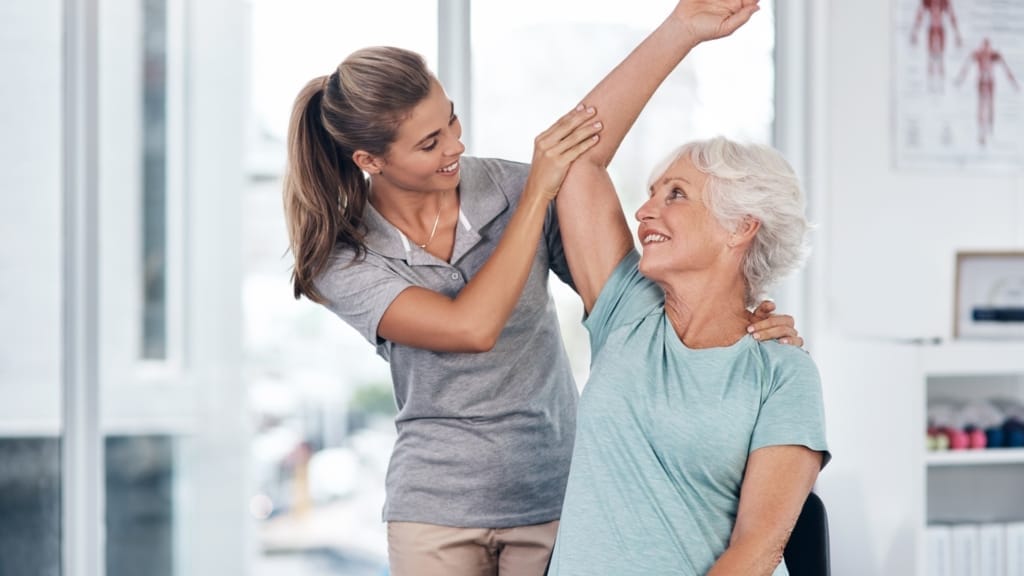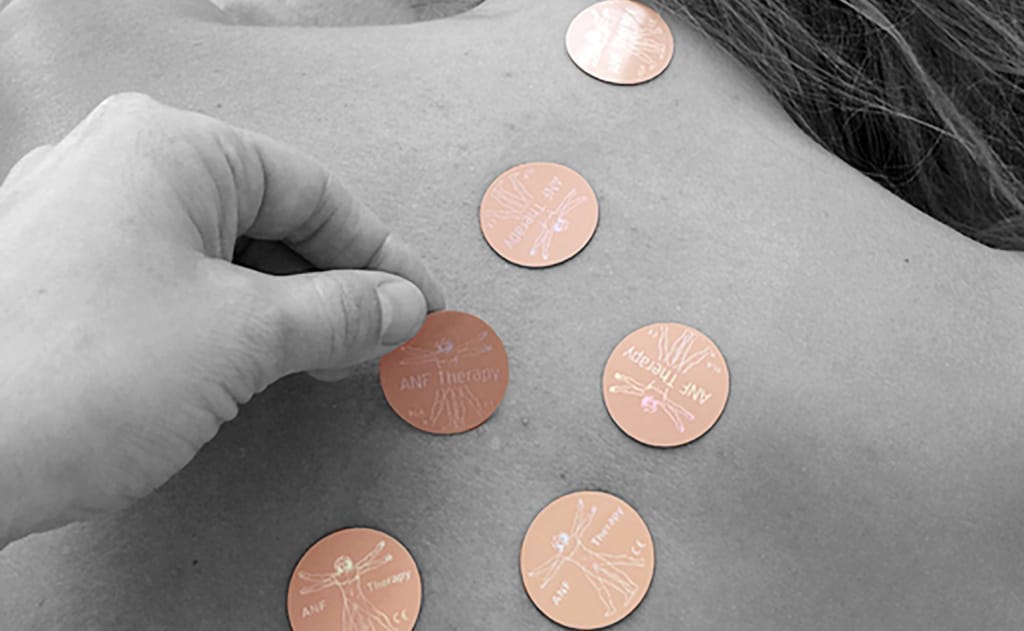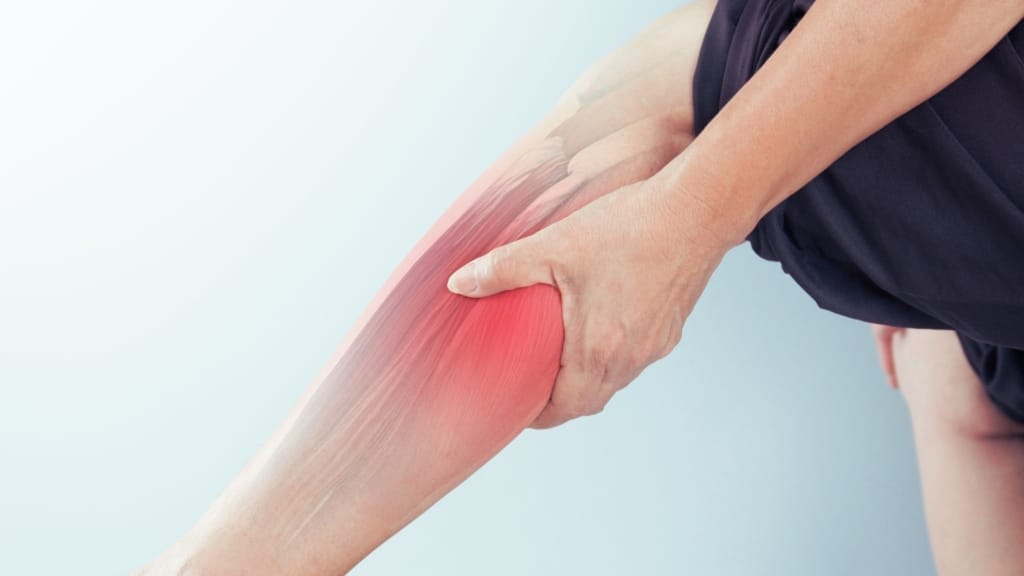
Table of Contents
What is Muscle Strain?
Muscle strains, often called pulled or torn muscles, occur when the muscles in your body are stretched beyond their limits. Muscles, crucial for all body movements, are anchored to bones by tendons, while ligaments connect bones. Straining a muscle can happen instantly—during a sudden sprint, lifting something heavy, or through any activity that demands more from your muscles than they can handle.
Muscle strains can affect anyone, regardless of age or gender. While they are more commonly associated with sportspeople, athletes, and those who lead active lifestyles. Even if you’re not involved in sports, overstretching your muscles during everyday activities—like lifting heavy objects incorrectly or making a sudden, awkward movement—can lead to a strain.
Grading of muscle strain:
Grading of muscle strain depends upon the severity of the symptoms.
Grade 1:
A Grade 1 muscle strain is the mildest form of muscle injury (5% of the muscle fibres are damaged). It is characterised by slight discomfort and minimal disruption to muscle strength. You might experience slight pain or a mild pulling sensation in the affected muscle, but this strain level typically doesn’t impede your ability to continue everyday activities.
Grade 2:
A Grade 2 muscle strain represents a moderate injury, more severe than a Grade 1 strain. This strain level is often accompanied by noticeable swelling or the appearance of bruises on the affected muscle area. You may also experience a reduced range of motion, making it difficult to move the affected muscle without pain.
Grade 3:
Grade 3 is the more severe form of injury in which there is a complete tear of your muscle (all of its fibres). You feel a lot of pain even during slight movement, followed by significant swelling and bruises over the affected area of your muscle.

What causes muscle strain?
According to Dr. Mikel H-G Hoff, your body needs a regulated amount of valuable resources for your muscle health. If your body lacks these nutrients, it weakens your muscles, resulting in muscle damage.
A muscle strain occurs when you put too much force on your muscle beyond its limitations. There are multiple causes that can lead to muscle strain. These include the following:
- When you do not warm your muscles before physical activity
- Fatigue
- Trauma to your muscle
- Poor flexibility
- Overexertion
- Doing repetitive stress movements that put pressure on your muscle
What are the symptoms of muscle strain?
The symptoms of the muscle strain depend upon the severity of the muscle injury. Its symptoms include:
- Pain in the muscle
- Tenderness
- Swelling in the muscle
- Discolouration the muscle
- Limited movement or loss of movement
- Weakness
How does an ANF Therapist diagnose muscle strain?
Your ANF Orthopaedic practitioner will diagnose muscle strain by taking your detailed history and performing a physical examination.
History:
When you visit an ANF Orthopaedic practitioner, it will thoroughly assess your condition and give you the best treatment plan. Here are some key questions you can expect during the history-taking segment of your consultation:
1-Your Biodata
Basic information about you, such as your age and gender.
2-Your Physical Activity:
ANF Therapist will ask about your regular exercise routines and any recent changes in activity levels.
3-Muscle Pain Assessment:
How much pain are you experiencing in your muscles? This helps gauge the severity of your condition.
4-Urine colour:
It will ask about changes in urine colour that indicate underlying issues.
5-Occupational History:
Information about your job and any physical demands it may place on you.
6-History of trauma:
Any recent or past injuries that could relate to your current condition.
Physical examination:
Your ANF Therapist will conduct a thorough physical examination to assess the extent of your condition and plan an effective treatment. Here are the key aspects they will focus on during the examination:
Muscle Shape:
Observing any abnormalities or changes in the shape of the muscle that might indicate an injury.
Muscle Color:
Check for any discolouration that could suggest bruising or other underlying issues.
Swelling:
Identifying any swollen areas; if swelling is present, note its size and extent.
Tenderness:
Assessing areas of sensitivity or pain upon touch helps pinpoint specific areas of inflammation or damage.
Muscle Mobility:
Evaluating the range of motion and mobility of the muscle to understand how the injury or condition affects movement.
Neurological Examination:
ANF Therapist will perform a detailed neurological examination to distinguish between inflammed and healthy nerves. It will assess areas in which ANF Devices should be applied.

How does ANF Therapy®️ help in managing muscle strain?
ANF Therapy®️ offers the best approach to managing muscle strain, as outlined by Dr. Mikel H-G Hoff. The main aim of this therapy is to remove the active inflammation as early as possible to help muscle healing. These devices are strategically applied to the affected area by certified ANF Therapists to stimulate and support the body’s natural healing processes. The primary functions of ANF Devices include:
- Removing active inflammation to reduce pain and discomfort.
- Promoting the body’s self-healing capabilities.
- Neutralising harmful free radicals that can damage cells.
- Assisting in muscle regeneration to restore strength and function.
If you have muscle strain, find a specialised ANF Therapist near you or find an ANF Therapist at www.findanf.com to start your treatment with ANF Therapy®️.
If you are a medical professional aiming to upskill your clinical skills, learn more about the ANF clinical education program at www.anfacademy.com
First Aid for Muscle Strain:
There are some first aid measures that you can take at your home to minimise your pain and inflammation. These include:
Rest your muscle:
Avoid using the affected muscle for at least two days. Prolonged rest is not indicated because it can make your muscles weak.
Ice protocol:
Ice is the best first aid readily available at everyone’s home. It is indicated in acute cases to reduce the swelling in the affected area.
Compression:
Lose compression with an elastic bandage can help reduce swelling in the affected area. Don’t compress it too tight because it will compromise the muscle’s blood supply and worsen the condition.
Elevation:
Elevating an injured muscle is a simple yet effective way to reduce swelling. Raising the affected area above the level of your heart helps decrease the blood flow to the injury, which minimises swelling and can aid in a faster recovery. Whether you’re sitting or lying down, find a comfortable position that allows you to keep the injured muscle elevated. Using pillows or cushions can help maintain this position comfortably. Remember, keeping the muscle elevated consistently can significantly improve your healing process.
How can I prevent muscle strain?
Preventing muscle strain is crucial for maintaining your physical health and ensuring you can continue your activities without interruption. Here are some effective strategies to help you avoid muscle strain:
1-Warm-Up Properly:
Always start with a warm-up to prepare your muscles for the physical activity.
2-Cool Down or relax:
Cool down after your workout or physical activity, allowing your muscles to relax gradually.
3-Exercise Correctly:
Use the proper techniques and equipment to prevent undue muscle stress during workouts.
4-Rest when fatigued:
Avoid intense physical activities when you are tired, as fatigue increases the risk of muscle strains.
5-Allow Time for Healing:
Give time for any injuries to heal before resuming activity to prevent re-injury.
6-Strengthen your Muscles:
Incorporate strength training exercises into your routine to build stronger, more resilient muscles.
7-Be Cautious on Slippery Surfaces:
Avoid running or walking on wet floors to prevent slips and falls that can lead to muscle strains.
Complications of muscle strain:
If muscle strain remains unaddressed, it can lead to irreversible damage to your muscles and loss of flexibility. Therefore, it’s essential to treat muscle strain as early as possible to avoid permanent muscle damage.

FAQs:
Is strain a severe injury?
Strain is the injury to your muscle. Minor injuries are caused by an overstretched muscle that sometimes heals independently without taking medications. Major injuries like grade 3 strain injuries can cause significant pain in your muscles and also reduce your mobility. It is not a severe injury if treated earlier.
What is the difference between muscle-torn and muscle strain (muscle torn vs muscle strain)?
Regarding muscle injuries, the terms “muscle strain” and “muscle tear” are often used interchangeably, but they indicate different levels of severity.
Muscle Strain:
This is usually the milder form of injury, often resulting from fatigue, overuse, or improper muscle use. It’s characterised by mild pain that typically arises after physical activity. A muscle strain might make you uncomfortable but allows for continued activity with caution.
Muscle Tear:
This is a more severe condition, indicating substantial damage to the muscle fibres. A muscle tear involves intense pain that persists even with minimal movement, significantly hindering your ability to use the affected muscle. The pain from a muscle tear is more pronounced and often accompanied by swelling, bruising, and reduced muscle strength.
What is the difference between muscle sprain and muscle strain (muscle strain vs. muscle sprain)?
Muscle Strain:
This injury affects either your muscles or tendons, which are the tough fibres that connect muscles to bones. Strains happen due to overstretching or tearing of these fibres due to overexertion or trauma. Symptoms typically include pain, muscle spasm, and weakness.
Muscle Sprain:
On the other hand, a sprain involves the ligaments, which are the bands of tissue that connect bones at a joint. A sprain occurs when these ligaments are stretched or torn from a sudden move or fall. The primary symptoms are swelling, bruising, instability, and painful movement.
Why Does Urine Turn Red After a Muscle Injury?
Experiencing red urine after a muscle sprain can be alarming, but there’s a scientific explanation. When muscles are severely damaged, as can happen with significant strains or injuries, they release myoglobin. Myoglobin is present within the muscle fibres. When these fibres are damaged, myoglobin is released into the bloodstream and eventually filtered through the kidneys, turning the urine red. This condition, known as myoglobinuria, indicates substantial muscle damage.
About ANF Therapy®️
ANF Therapy®️ uses circular ANF Devices, which are applied directly on the skin after palpation and assessment by a trained ANF Therapist following the ANF Therapy®️ Method, Patented Model no. U202030252, ES1259974.
The ANF Therapy®️ purpose is the alleviation of injury and pain within minutes.
Our aim is that the patient experiences a reduction of pain and swelling, an increase in range of motion, and an improvement in quality of life related to health. Non-transdermal, non-invasive device, NO needles or chemicals are used.
Do you need help with your health issues? Have you been experiencing symptoms of muscle strain?
Contact us, and we will explain how we can help you!


